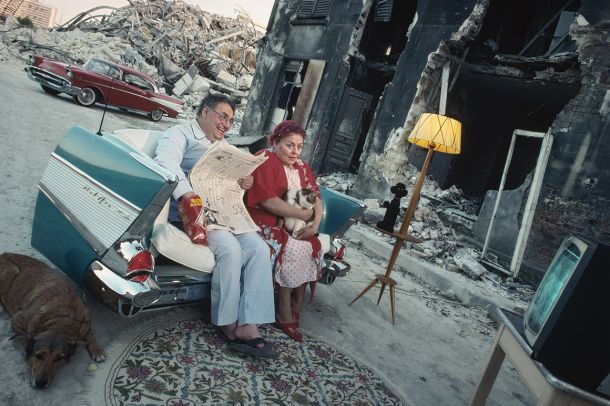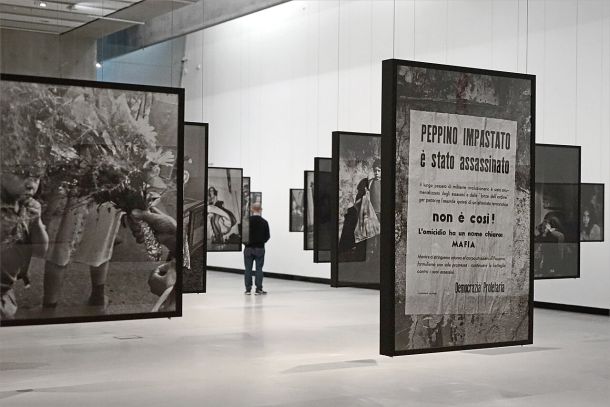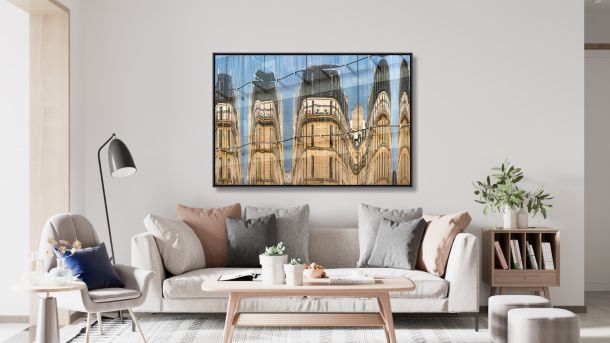Low-Tech Photography: Holga and Diana in the Museum

Air sleeves – Photo : © Sebastien Desnoulez
In a world dominated by digital technologies, one question arises: how has low-tech photography managed to carve a place for itself in contemporary art? By exploring the journey of the iconic Holga and Diana cameras—now part of museum collections—discover how these devices reinvent visual language through their lo-fi aesthetic. This practice of experimental photography, turning technical constraints into creative assets, opens up new and captivating aesthetic perspectives.
Table of Contents
- The Distinctive Aesthetic of Holga and Diana
- The “Toy Camera” Status and Its Artistic Impact
- Legacy and Collector Value
- Iconic Photographers Who Use Them
- Technical Simplicity and Experimentation
- Analog Persistence in a Digital World
- Comparison
The Distinctive Aesthetic of Holga and Diana
The lo-fi aesthetic of Holga and Diana cameras is defined by deliberate imperfections: low contrast, visible grain, and heavy vignetting. These traits, stemming from their simplified construction, shape a unique visual identity in contemporary low-tech photography.
Light leaks and vignetting in Holga and Diana images become artistic signatures. These effects, born from their rudimentary design, lend each image a touch of authenticity. Photographers embrace these “flaws” to create images filled with poetic charm.
| Features | Holga 120 | Diana F+ |
| Lens Type | Plastic meniscus lens (60mm f/8) | Plastic lens (75mm f/11 to f/22) or optional glass lens |
| Vignetting | Pronounced, especially without 6×4.5 cm mask | Controllable via built-in format mask |
| Exposure Control | 2 speeds (1/100s and Bulb) | 3 apertures (f/11, f/16, f/22) + Bulb mode |
| Format Options | 6×6 cm (square) or 6×4.5 cm (with mask) | 6×6 cm + 35mm (4 modes) + optional instant back |
| Flash/Color Options | Built-in flash with 3 fixed color gels | Detachable flash with 16 interchangeable color gels |
| Experimental Features | Double exposure | Built-in pinhole, double exposure, long exposures |
| Interchangeable Lenses | Clip-on accessories (fisheye, wide angle) | 5 interchangeable lenses (20mm to 110mm) |
| Tactile Experience | Manual film advance, no frame counter | Manual film advance, mechanical frame counter |
| Distinctive Look | Soft focus, chromatic aberrations, surreal rendering | Dreamlike aesthetic, varying depth of field |
| This table compares the technical and aesthetic features of the Holga and Diana F+ cameras, highlighting their similarities and differences in design, functionality, and image style within the context of contemporary low-tech photography. | ||
Holga and Diana images exude a dreamlike and melancholic atmosphere. This visual quality, enhanced by film grain, evokes distant memories. The nostalgic effect of these cameras resonates strongly in a hyper-sharp digital world.
The controlled randomness of low-tech cameras fosters creativity driven by unpredictability. Photographers embrace the unexpected in their shooting process. This technical uncertainty becomes a powerful tool for unique artistic experimentation.
The “Toy Camera” Status and Its Artistic Impact
The paradox of “toy cameras” lies in their dual identity: playful objects and artistic tools. Their technical simplicity contrasts with the artistic recognition they’ve achieved, as seen in the history of iconic photographic works. This shift marks a turning point in contemporary photography.
Holga and Diana’s low purchase price has democratized access to artistic photography. These cameras allow a wide audience to explore their creativity without technical barriers. Their tactile and experimental nature appeals to both beginners and professionals.
- Generic museum exhibitions highlighting toy camera creativity (no institution named)
- Award to David Burnett in 2001 for a Holga-shot photo, validating the low-tech approach
- Adoption by renowned photographers like Susan Burnstine, whose limited editions are included in public and private collections
- Gradual integration of Holga/Diana images into museum collections, signaling a paradigm shift away from technical perfection
The technical constraints of toy cameras challenge conventional norms. Limited resolution, strong vignetting, and visible grain question the obsession with sharpness. This echoes the legacy of artistic movements that have always redefined aesthetic standards.
More and more museums are including low-tech images in their collections. Photographers like David Burnett have seen their work enter the art historical canon. This institutional recognition reflects the evolution of a practice once seen as playful into a respected art form.
Legacy and Collector Value
The Diana was introduced in the 1960s in Hong Kong as an affordable toy camera. Although production stopped in the 1970s, its reissue by Lomography in 2007 revived interest in its lo-fi aesthetic, marking a legacy that spans decades.
Launched in 1982, the Holga evolved from a simple family camera to a cult tool for experimental photography. As noted in the history of iconic photographic works, its adoption by artists like David Burnett—awarded in 2001—cemented its artistic recognition despite its technical limitations.
Original Holga and Diana models are gaining value among collectors. Their ephemeral nature, due to discontinued production of certain versions, makes them coveted items for photography enthusiasts and contemporary art lovers. They also illustrate the criteria of artistic legitimacy.
The return of analog photography has fueled renewed interest in these low-tech devices. Their accessibility (under $40) and signature aesthetic (vignetting, grain) position them as affordable creative tools. Lomography supports this trend with updated versions like the Diana F+.
Iconic Photographers Who Use Them
Renowned artists have incorporated Holga and Diana into their creative process, turning these low-tech tools into vehicles of artistic exploration. Our 2025 selection showcases pioneers who revisit lo-fi aesthetics to push the boundaries of contemporary photography.
David Burnett used the Holga to document historic moments, including Al Gore’s 2000 presidential campaign. His iconic photo, shot with this “toy camera”, proves that even a rudimentary device can produce visually powerful images.
Susan Burnstine explores dreamlike themes by modifying Diana cameras. Her creations, often featuring recycled glass lenses, express recurring dreams through a blurry, poetic style, turning the camera into an extension of her inner vision.
- David Burnett’s award-winning Holga image of Al Gore, proving that artistic quality transcends technical limitations
- Susan Burnstine’s dreamlike work with customized Dianas, exploring surreal and emotional worlds
- Steve Parrott, a street photography master using Holga, revealing beauty in imperfection
- Nancy Rexroth and her “Iowa” series shot with a Diana, blending melancholy and realism in enigmatic images
Technical Simplicity and Experimentation
The plastic lenses of Holga and Diana produce signature optical quirks: blur, distortion, and color fringing. Rather than flaws, these features define a unique low-tech aesthetic where every image bears the imprint of its tool.
The absence of complex settings frees creativity. Photographers focus on composition and light, turning uncertainty into artistic opportunity. This intuitive approach brings the shooting experience closer to spontaneous brushstrokes.
The Diana+ includes a built-in pinhole mode, letting light pass through a tiny aperture. This lensless technique produces images with soft contours and subtle contrast, ideal for dreamy effects and long exposures.
Users often customized their cameras by adding lenses or modifying the body to control light leaks. These hands-on adaptations reinforced the DIY identity of low-tech photography, celebrating artisanal experimentation.
Analog Persistence in a Digital World
In an age dominated by digital tools, Holga and Diana represent cultural resistance. Their use affirms a unique aesthetic, celebrating authenticity and slow creativity. The hashtag #filmisnotdead, with 24 million posts, reflects a passionate community challenging the cold efficiency of digital photography.
The 120 film used by Holga and Diana offers exceptional resolution, comparable to 50 digital megapixels. Its large surface area captures more light, yielding richer colors and smooth tonal transitions. Compared to digital sensors, it preserves unequaled visual quality, especially in large prints.
Analog’s continuous resolution contrasts with digital’s pixel grid. Silver halide grains (~20 microns) form an unpixelated image. This difference between flowing analog texture and sampled digital data creates an aesthetic where the material imprint is unmatched digitally.
The tactile experience of Holga or Diana enhances their appeal. Manual film loading, the mechanical shutter sound, and the wait for development create a sensory ritual. This stands in contrast to instant digital feedback, echoing the artistry of gesture cherished in low-tech photography.
Comparison
Comparing Holga and Diana reveals both similarities and crucial differences in how they approach low-tech photography. While they share core technical principles, they offer distinct creative possibilities that influence their artistic use and museum recognition.
Holga vs Diana: Creative Approaches
Both cameras embrace lo-fi aesthetics, but with nuance. The Holga, made of cheap plastic, produces images with strong vignetting and optical distortions. The Diana+, reissued by Lomography, offers more flexibility with interchangeable lenses and pinhole mode—appealing to artists seeking more creative control.
Basic Technical Capabilities
Technical limitations define their character. The Holga 120N has two shutter speeds versus three on the Diana F+. Their minimalist exposure controls force photographers to adapt instinctively to light, favoring authenticity over precision.
Artistic Experimentation and Customization
Manual customization adds to their appeal. Users often modify the bodies to create light leak effects. The Diana+ includes features like instant film back and double exposure, expanding its creative scope beyond its original era.
Museum Collections and Institutional Recognition
Images made with these cameras have earned places in major institutions. David Burnett’s award-winning Holga photograph exemplifies this legitimacy. Their inclusion in public and private collections marks a shift in how low-tech photography is perceived.
Contemporary Trends and the Analog Comeback
The analog revival fuels enthusiasm for these tools. Their affordability (under $40 new) and distinctive look (vignetting, grain) make them appealing alternatives to digital perfection. Lomography continues production of modern versions to meet the growing demand for artisanal creativity.
To explore these unique aesthetics, discover how these approaches can transform your space with our exclusive fine art prints. Each image, rich in authenticity, tells a story where imperfection becomes beauty.
Low-tech photography, blending lo-fi charm with artistic credibility, reinvents creativity by embracing simplicity and flaws. Holga and Diana—now icons in museum collections—embody a nostalgic revolution against digital conformity. Let yourself be inspired by their dreamlike images and explore our curated analog series to enrich your space with unmatched authenticity.
FAQ
Where can I buy a Holga or Diana?
You have two main options. The official Lomography website offers modern Diana models like the Diana F+—often sold in bundles with flash and film, with international shipping. Online platforms like eBay feature a wide variety of Dianas, whether new, used, or vintage, as well as Holga accessories. Sellers from all over the world let you filter by condition or price.
What type of film should I use?
For the Diana F+, use 120 film such as LomoChrome Metropolis 120 ISO 100–400. The content does not specify a required film type for the Holga, but 120 film is standard.
Are they suitable for beginners?
Holga and Diana cameras, with their plastic lenses, produce noticeable optical imperfections like blur, vignetting, or light leaks. This makes them less ideal for predictable, sharp results. However, for beginners interested in photographic experimentation and alternative aesthetics, they are perfect. Affordable and able to create distinctive, dreamlike images, they invite creativity beyond traditional norms.
How do you achieve the vignette effect?
Vignetting—a darkening of image corners—is a natural effect of low-tech cameras like Holga and Diana, caused by their light-leaky design. It’s a visual signature. You can also recreate and adjust the intensity digitally using editing software. This adds a retro mood or draws the viewer’s eye toward the center, allowing for creative composition.
Are there other low-tech cameras?
Yes, many low-tech cameras exist beyond Holga and Diana. Often called “toy cameras” or “plastic cameras”, they are loved for their unique aesthetics. The Lomographic Society promotes this spontaneous approach to photography. Popular models include the Lomo LC-A Compact Automat and the Lomo Action Sampler 2.0. They produce optical effects like saturated colors, blur, or light leaks, sought after by creative photographers.
How long do they last?
Original Diana cameras, made from low-grade plastic and sold as toys, were not designed for durability. They often suffered from light leaks, film advance issues, or build flaws that limited their functional lifespan. For the Holga, available specs describe usage but no specific durability claims are provided.



